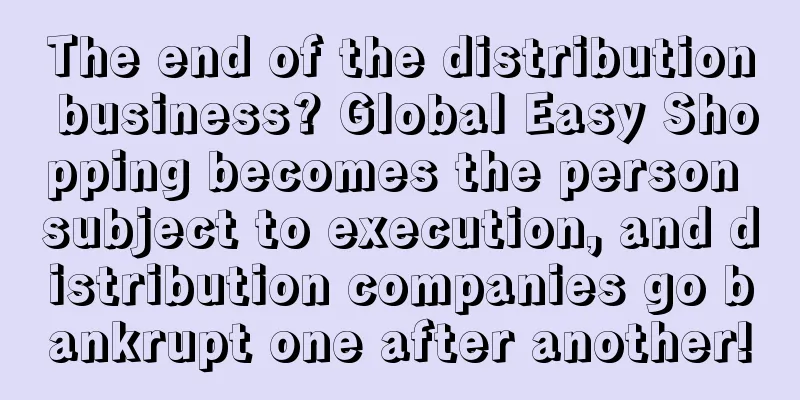The profits in this market have taken off, and the overseas sales have attracted 20 million users by relying on "low prices"

|
In the world economic map, Africa was once a forgotten land of modern trade. Although the East African Rift Valley gave birth to the common "grandmother" of mankind, Lucy, and although the person was replaced later, the birthplace is still the African continent. This land is recognized by the academic community as the "cradle of human birth." Today, Africa has become the last "blue ocean market" in the global economy. It is a region with diversified consumption levels . It has a land area of 30.2 million square kilometers, 54 countries, and a population of about 1.452 billion, second only to Asia, with huge market consumption potential. Image source: Unsplash At present, the global market is in a special period of economic downturn and difficult recovery. The African market has become the fastest growing economy in the world, standing out from the crowd with an unstoppable momentum and an astonishing growth rate. Blue ocean market and demographic dividend have become the hot search keywords for the African market this year. Currently, the top ten countries with the highest fertility rates in the world are all in Africa. The young population here accounts for as high as 70%, making it the region with the youngest population in the world. The demographic dividend has led to a continuous improvement in the market structure in Africa, and the urbanization process has also continuously optimized the business environment. The 3G network has basically covered the core areas, and the 4G network has covered the core areas, and 90% of the products are made in China . At last year's high-end seminar on in-depth China-Africa economic and trade cooperation, the Ministry of Commerce's International Trade and Economic Cooperation Research Institute released the "China-Africa Economic and Trade Relations Report 2023", showing that China has maintained its position as Africa's largest trading partner for 14 consecutive years. Some neglected markets often contain huge treasures, and the next blue ocean for Chinese companies may be in Africa. 0 1 Why the African market? The African market needs Chinese products, and Chinese products also need the African market. Africa is located near the equator, where ultraviolet rays are much stronger than in other places, and the skin is easily sunburned. The special geographical environment has created special market demands. In the African market, cosmetics such as sunscreen, moisturizing water, eye shadow and lipstick are very popular. 2023 marks the tenth anniversary of the Belt and Road Initiative. What does ten years mean? Is it the changes in the global industrial chain, supply chain, and value chain? Or is it the interconnection of the China-Laos Railway, the Jakarta-Bandung High-Speed Railway, and the China-Europe Express? Or is it the continuous "going out" of Chinese manufacturing and the continuous "importation" of high-tech? The story of the past decade is both grand and specific. We have seen that more and more Chinese companies, under the Belt and Road Initiative, have broken through the limitations of time and space, crossed space and time, and brought about historic changes in the economic structure of China and emerging markets. Taking the African market as an example, the bilateral import and export volume of goods between China and African countries (regions) in 2023 was US$8.3631 million, an increase of US$4.6 million compared with the same period in 2022, a year-on-year increase of 166.5%. The African market has long been on the edge of developed markets, creating a vacuum in the global market, with obvious characteristics of outdated infrastructure, lack of investment, and imperfect industrial chain. In this sense, the "Belt and Road" initiative happens to focus on developing countries and can fill the above shortcomings. Image source: Pexels As early as 2018, Chinese cosmetics companies discovered the huge potential of the African market. Shanghai Jahwa is one of the first Chinese companies to notice the blue ocean market of cosmetics in Africa. Many of its whitening products are very popular in the South African market, and some places have even become supermarkets for Chinese cosmetics. Six years ago, in response to the country's "Belt and Road" initiative, Shanghai Jahwa sold Liushen Floral Water to Mauritius, Zambia and other countries, and even made Liushen Floral Water into "hard currency" in the African market. According to statistics from international beauty industry organizations, the annual growth rate of cosmetics demand in the African market is currently 30%, and in the South African market it is as high as 65%. After 2023, the "Belt and Road" will attract more Chinese cosmetics companies to enter emerging markets and realize the global layout of Chinese cosmetics. We have observed that with the help of finance, logistics, warehousing and other aspects, Chinese companies are forming increasingly close and positive interactions with countries participating in the Belt and Road Initiative, and new export growth points and time windows for emerging markets are rapidly taking shape. In the African market, in addition to Chinese cosmetics companies and the well-known Transsion mobile phone, there is another successful company case, StarTimes, which was born in Qinhuangdao, China. It is also the fastest growing and most influential Chinese digital TV operator in the African market. It set its sights on the resource-rich African market as early as ten years ago. African consumers have a strong desire to improve their spiritual and cultural lives. In 2007, StarTimes held a preliminary negotiation with Rwandan senior officials, expressing its intention to empower Rwanda's television industry through digital television, and thus obtained the first overseas digital television operating license. A year later, StarTimes began to land in Rwanda. The initial installation fee was US$200, the installation and debugging fee was US$50, and the monthly subscription fee for more than a dozen programs was US$47, which was only one-fifth of the price of other operators. StarTimes quickly became the digital TV operator for local users through its large-scale low-price strategy. In addition, StarTimes also has a complete after-sales service system, bringing the mature after-sales service model of China's home appliance industry to Africa, not only providing free door-to-door service, but also lifetime warranty and maintenance. In addition, StarTimes has introduced Chinese TV series to Africa and translated them into local languages. Today, Sun Wukong and Zhen Huan have become household names in Africa. At present, StarTimes has established companies and carried out digital TV operations in more than 30 countries in Africa, with 20 million users, and has become a very influential digital TV operator in Africa. Guo Ziqi, Vice President of StarTimes, said: "The most important reason why StarTimes was able to enter Africa and gain a foothold is the purpose of our African business, which is to enable every African family to afford, watch and enjoy digital TV and share the beauty of digital TV." In the sub-Saharan region with a population of nearly 1 billion, watching TV is indeed a rigid demand. StarTimes has made the expensive digital TV affordable to the general public, and at the same time, it has developed a complete after-sales service system. It has brought the mature after-sales service model of China's home appliance industry to Africa. A topic worth pondering is that the concept advocated by the "Belt and Road" is becoming a new direction for Chinese companies to grow from within and explore abroad. There are not only large-scale projects such as large infrastructure and industrial chains, but also many "small and beautiful" projects. For example, small and medium-sized enterprises with relatively weak financial strength are also looking for emerging markets suitable for themselves and exploring overseas. We see that the global economy is intertwined in various games between people, countries, developed markets and emerging markets, and is actively or passively connected with enterprises. Chinese companies, as producers, are also participants in global trade. Behind this business phenomenon is the general trend of Chinese companies going abroad and embracing emerging markets, whether familiar or unfamiliar. In this wave of going overseas, some companies have succeeded, while others may fail due to strategic mistakes. The key lies in what kind of market (developed market/developing market/emerging market/undeveloped market) the company uses to carry out its global layout. 0 2 Africa's middle class numbers 360 million GDP growth rate reached 5.8% The African Development Bank predicts that the average growth rate of the African market will stabilize at 4.1% from 2023 to 2024, and the GDP growth rate of the relatively wealthy South Africa will increase to around 5.8% in 2024 ; data from the United Nations Population and Development Commission shows that the number of middle-class people in Africa currently reaches 360 million, and it is expected that by 2060, the number of middle-class people in Africa will grow to 1.1 billion, accounting for about 42%. Unlike the demographic structure of the European, American and Asian markets, the African market is experiencing rapid population growth. The population of sub-Saharan Africa is growing at an annual rate of 2.7%, which is more than twice the rate of South Asia (1.2%) and Latin America (0.9%). This means that Africa is adding the population of France (or Thailand) every two years. Image source: Pexels The Belt and Road Initiative proposed by China 10 years ago should be viewed against the background of the historic and major changes in the economic structure of China and the world. We have adjusted the opening pattern that was mainly based on the Western market in the past 30 years and opened up new market growth points outside the developed markets. According to the Shanghai Securities News, from January to July last year, the import and export data of Chinese enterprises to the countries participating in the construction of the "Belt and Road" were quite impressive, becoming a new growth point for foreign trade exports. Data showed that the total value of foreign trade imports and exports in the three provinces and one city in the Yangtze River Delta was about 8.6 trillion yuan, accounting for about 36.54% of the total value of imports and exports in China. If Chinese companies want to become international brands, they need to have an international strategic vision. Looking at the world, the African market will be the last "blue ocean market" with a population of over 1.4 billion in the next decade. It has a land area of 30.2 million square kilometers and a population of about 1.452 billion, second only to Asia, and has huge market potential. We believe that the long physical distance and unfamiliar cultural environment can no longer prevent Chinese cosmetics companies and domestic brands from turning their attention to the growing market in Africa. The demographic dividend has led to a continuous improvement in the African market structure, and the urbanization process has also continuously optimized the business environment. Africa's young population accounts for as much as 70%, making it the region with the youngest population in the world. Urbanization construction has basically covered the 3G network, and the 4G network has covered the core areas, and 90% of the products are made in China. Thanks to the large number of young consumers in the African market, the African beauty industry has maintained a good growth momentum. Euromonitor International data predicts that among the 54 African countries, Africa's beauty and personal care market will reach US$8.2 billion in 2023, and by 2025, the size of Africa's beauty market will exceed US$10 billion. Due to multiple factors such as rapid economic growth and the explosion of demographic dividend, the African market has become the fastest growing consumer market in the world. As the younger generation of consumers in the African market continues to grow, local culture and aesthetic awareness are beginning to awaken, and the African cosmetics industry has to face the two major market demands of skin care and beauty. Technology has no borders, digital technology has no borders, and trade has no borders. The essence of business is to shape and change people's lifestyles. Chinese companies are using business to change the lifestyles of young people in Africa. The local supply chain of Chinese companies responds quickly in all aspects such as design, R&D, production, transportation and distribution. After more than ten years of development, domestic brands have performed well and are now comparable to international brands in terms of product quality, technological R&D and design creativity. Africa is a large market with a population of over 1.4 billion. With economic growth, the rise of the middle class and steady urbanization, it will form a huge consumer market in the future. It is currently in the early stages of market development and is very friendly to Chinese products. This has created an excellent window period for Chinese companies to go overseas and open up the African market. |
<<: Sellers panic, Amazon traffic plummets 30%
>>: Amazon has made multiple fee adjustments!
Recommend
More than 12,000 toy sets were urgently recalled by CPSC! Available on Amazon
It is learned that on September 12, the U.S. Consu...
What is Revolut? Revolut Review
Revolut is an online payment service provider that...
Linda Yaccarino takes over as Twitter CEO! Works to restore advertising revenue!
Linda Yaccarino took office as the new CEO of Twit...
The global market has reached 20 billion US dollars! Will this track become a new growth point for cross-border sellers?
It is learned that according to Juniper Networks r...
What is Shopee Seller Penalty Points System? Review of Shopee Seller Penalty Points System
If a seller violates the Shopee platform rules dur...
Walmart launches Canoo LDV delivery service! Speed up the delivery of online orders!
<span data-docs-delta="[[20,"获悉,据外媒报道,近日,沃...
What is Exact Match? Exact Match Review
Exact mATCh , or "precise match", is a k...
Amazon is accused of infringement! Suspected of abusing third-party data, it may face a huge fine!
Infringement is something that Amazon absolutely d...
US online sales slowed down in April! Prices of three major categories rose sharply!
<span data-shimo-docs="[[20,"获悉,近日Adobe公布了...
Primeday is officially announced! A new round of US dollar market is coming!
Today, Amazon officially announced the event date ...
The mainstream of US e-commerce has changed! 65% of consumers plan to buy DTC brands!
<span data-shimo-docs="[[20,"获悉,根据Diffusio...
The most searched CEOs in the world are revealed! Musk is first, Bezos is third!
Due to the great interest in famous entrepreneurs,...
Permanently banned! Hundreds of millions of funds lost! He made 200,000 orders a day, and he sold 1.1 billion
As we all know, selling masks is a double-edged sw...
What is U Select U Product? U Select U Product Review
Uxuan Upin is a professional cross-border e-commer...
What is Sinbad International? Sinbad International Review
Shenzhen Sinbad Business Consulting Co., Ltd. was ...









![[Must-read] Amazon tools that can improve work efficiency!](/upload/images/67e7484dcfb76.webp)